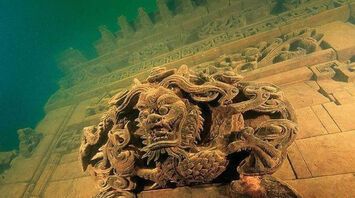The mysterious underwater city – a historical relic of China

Under the waters of Qiandao Lake in the Chinese province of Zhejiang lies a submerged monument frozen in time - the ancient city of Shicheng. It is often referred to as the City of the Lion because of its proximity to the nearby Wu Shi Mountain or "Five Lion Mountain."
Conflicting historical accounts suggest that this submerged wonder was founded more than 600 years ago. TimesTravel tells us why the city was flooded and how it has remained underwater for so long.
Flooding the city - why?
In 1959, despite its magnificent architecture, the city was deliberately flooded to create a dam for the Xinan hydroelectric power plant. Today, the city is 400 meters underwater. According to reports, nearly 300,000 people were displaced during the flood.
For decades, the Lion City remained "forgotten" until its "rediscovery" in 2001 when the Chinese government organized an expedition to assess its remains. Further interest was sparked later when National Geographic published an article showing previously unseen photographs and illustrations of the city's potential past appearance.

How has Shicheng been preserved over the years?
Thanks to its immersion in fresh water and limited exposure to light and oxygen, the city remains well-preserved.
It covers about half a square kilometer and has five entrances. There are also perfectly preserved stone statues of various animals, including lions, dragons, and phoenixes. A special decoration of this wonder is historical inscriptions dating back to 1777.
Nowadays, you can visit this hidden world, but only a limited number of people have access. In 2014, the Chinese authorities allowed underwater excursions.
Despite the difficulties associated with its current state, it is hoped that the growing interest in the site will contribute to its preservation. Future generations must also be able to see and explore the remains of this colorful and unusual place.



















